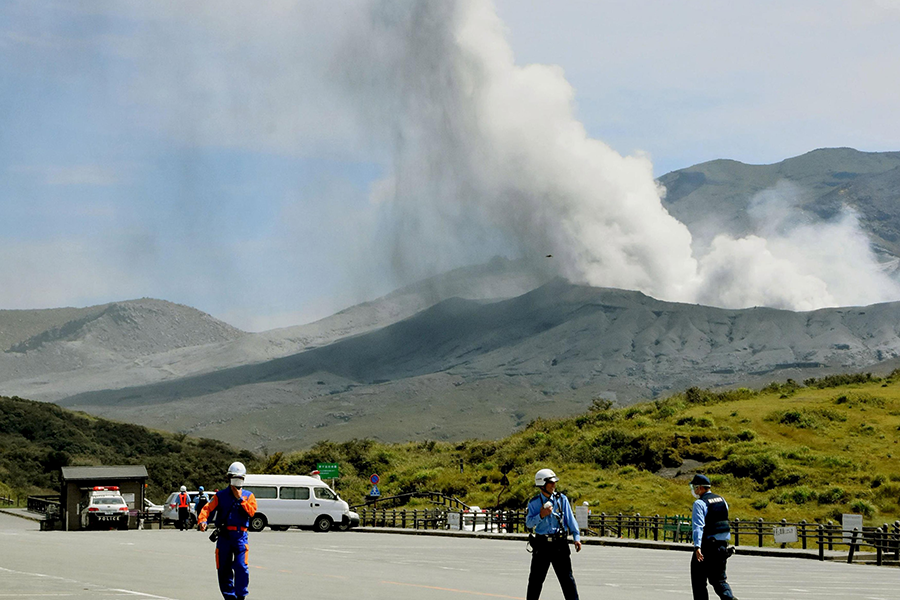Mount Aso, Japan’s most active volcano, erupts
Loading...
A mile-high plume of ash and smoke is hovering above Japan’s Mount Aso, which erupted without warning early on Monday morning.
Located on Japan’s southernmost island of Kyushu, Mount Aso is the country’s most active volcano and a popular tourist hiking destination, with its highest peak reaching more than 5,000 feet.
Japan’s Meteorological Agency said that there are no immediate reports of damage or injuries, reports Japan Today. A small number of people in the parking lot near the peak of the mountain were safely evacuated this morning, while police were checking if there were hikers on the trails at the time of the eruption.
"We suddenly saw an unusually massive plume rising in the air," Kimihiko Jo, an Aso official, told Agence France-Presse.
"The black and grey column at one point appeared to be weakening, but it's growing bigger again," he said.
The meteorological agency raised the alert level for Mt. Nakadake, one of the five peaks that that make up Mt. Aso, to level 3 on the scale of 5, which means that people should not approach the mountain. It warned of danger from falling rocks and smoke from the plume.
Mount Aso has one of the world’s largest calderas, a depression – about 12 miles in diameter in Aso's case – that formed over tens of thousands of years by giant eruptions that forced a former volcano chamber to collapse. The mountain’s active volcano peaks are in the center of the caldera.
Aso has also produced more explosive eruptions than any other volcano in the world. It is located on the so-called Ring of Fire, the horseshoe-shaped, highly volcanic region of the Pacific Ocean basin that is home to 75 percent of the world’s volcanoes and 90 percent of the world’s earthquakes.
Officials have asked people not to enter an area of 4 kilometers, or about 2.5 miles, around the volcano, mostly populated by restaurants and a museum, but not houses, reports Nikkei Asian Review.
All flights from nearby Kumamoto Airport have been canceled or re-routed.
Mt. Aso have been active since last year. In August, the meteorological agency issued an alert after picking up increasing seismic activity at a volcano south of Aso. In September last year, Mount Ontake in central Japan erupted and killed 63 people in what was considered the deadliest volcanic eruption in the country since 1902.





